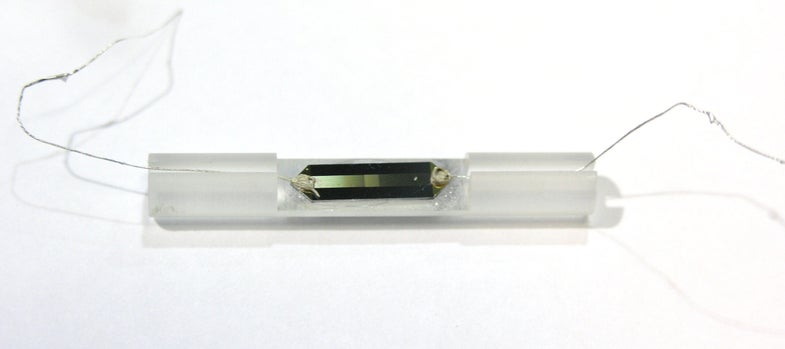In Tiniest Computer Memory Ever, Researchers Successfully Store Data in Atomic Nuclei
We may earn revenue from the products available on this page and participate in affiliate programs. Learn more › Physicists...

We may earn revenue from the products available on this page and participate in affiliate programs. Learn more ›
Physicists have stored information for nearly two minutes inside the magnetic spins of atomic nuclei, producing the longest-lasting spintronic device yet and what could be the world’s tiniest computer memory.
There’s just one problem: the computer operates at -454 F (about 3.2 degrees K) and requires a magnetic field roughly 200,000 times more powerful than Earth’s.
Still, it’s a major advancement in spintronics, which involves storing data in the magnetic compasses of atomic particles. Usually, data is stored in the spin of electrons, but the memory lifetime is on the timescale of microseconds, according to the study, conducted by researchers in Australia and Utah and published today in the journal Science.
Instead, the researchers stored data in the longer-lived nucleus of an atom. D.R. McCamey and colleagues mapped the electronic spin of electrons orbiting phosphorus atoms that had been added to a silicon semiconductor. The team used near-terahertz electromagnetic waves to give the electrons a specific spin. Then they used FM-range radio waves to “write” the spin onto the phosphorus nuclei, as explained by the University of Utah.
After 112 seconds, the spin was mapped back onto an electron, to be electrically read out. The team used classical binary data (0 and 1) rather than quantum data. But the method could be used in conventional computers as well as quantum computers, according to Christopher Boehme, a University of Utah physics professor and senior author.
Two years ago, a different research group reported storing quantum data for two seconds within atomic nuclei, but they did not read it electronically, Boehme said. The longer time is more than adequate to create spintronic memory for computers, he said.
It’s effective because nuclei are less susceptible to temperature changes and interference from other electrons, McCamey said: “Its spin isn’t messed with by what’s going on in the clouds of electrons around the nucleus. Nuclei experience nearly perfect solitude.”
The next step would be figuring out how to accomplish the same task in higher temperatures and weaker magnetic fields, Boehme said.